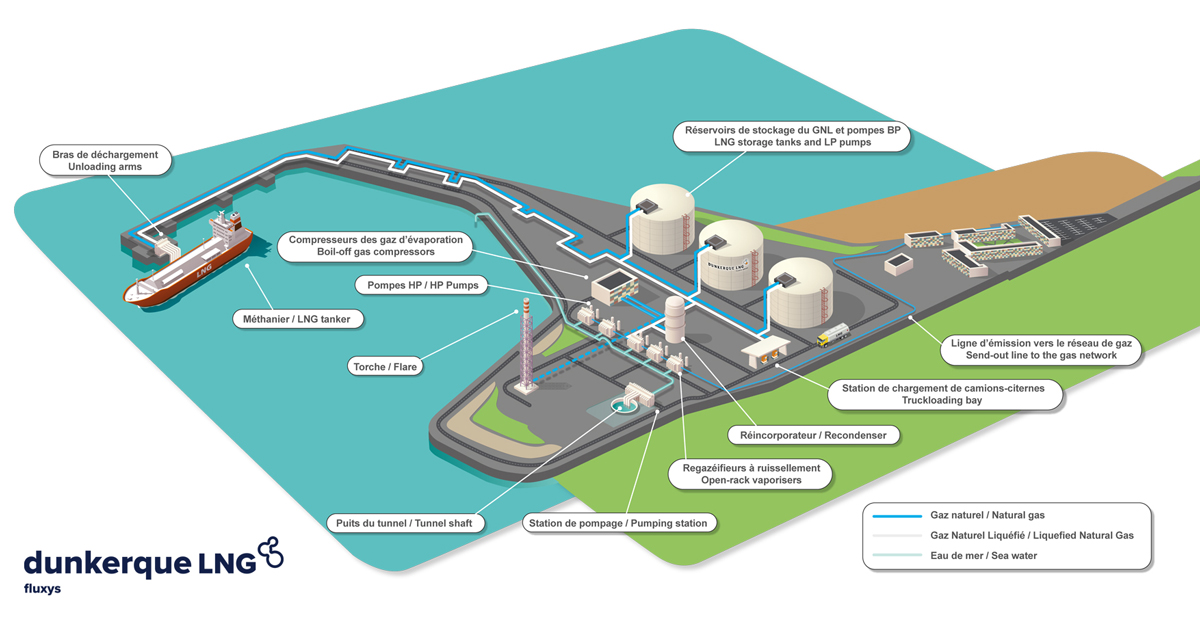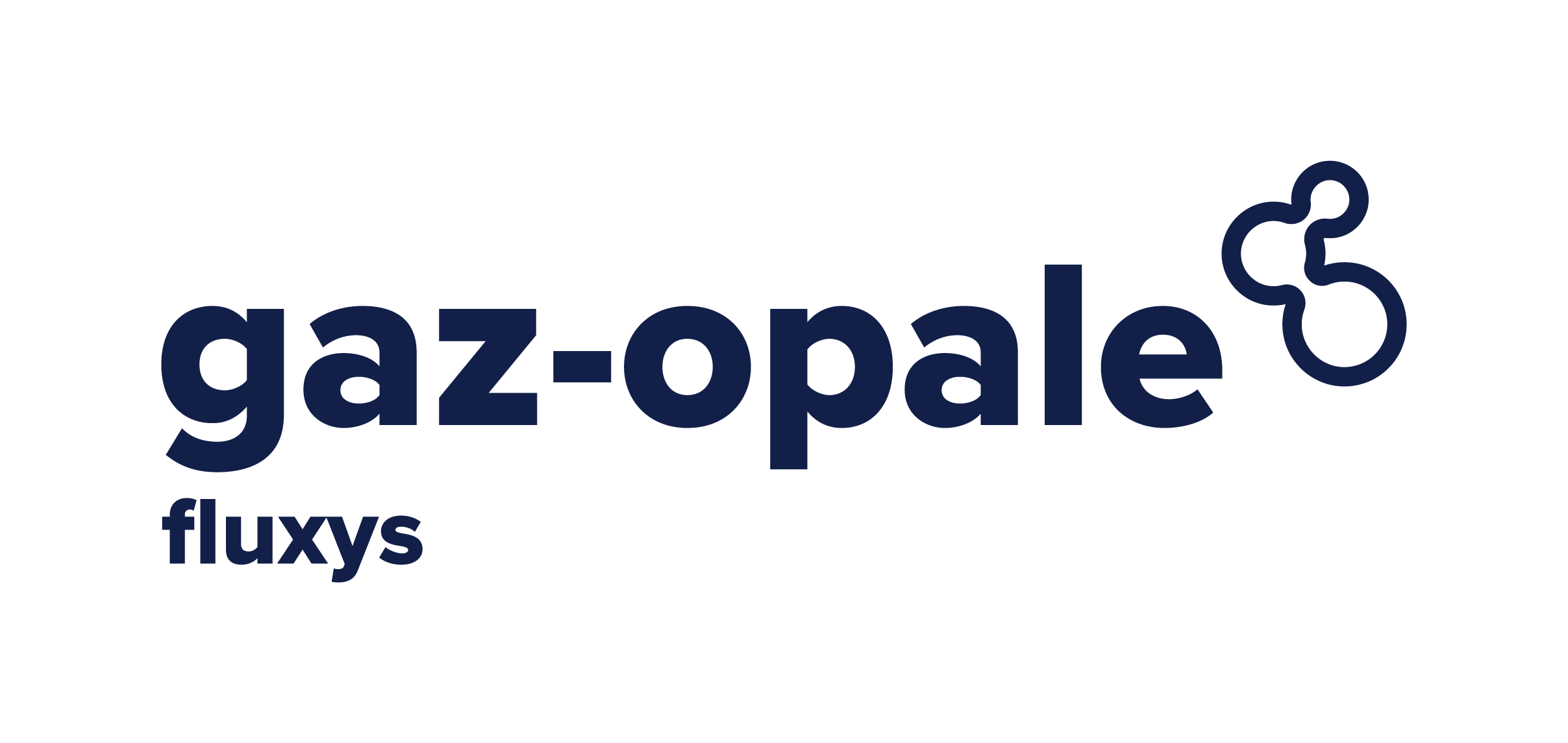Dunkerque LNG Infrastructure
Largest terminal in continental Europe
Facilities and installations
Occupying a 56 ha site alongside Dunkirk's Western Harbour, the Dunkerque LNG terminal offers:
- a jetty ready to accommodate vessels from 5,000 m³ to the world's largest Qmax LNG carriers (265,000 m³) and able to unload at a maximum flow rate of 14,000 m3 per hour and 8,800 m3 per hour for reloading ;
- 3 storage tanks, each capable of storing 200,000 m3 of LNG at -162°C;
- 10 Open Rack Vaporizers (ORV) or regasifiers to raise the temperature of the LNG and enable it to return to its natural gas state ready to be sent out into the supply network;
- a 5 km tunnel between the discharge canal of the Gravelines nuclear power plant and the terminal – to carry some of the heated cooling water discharged by the power plant for use in reheating the LNG in the ORVs.
Technical capacity
The Dunkerque LNG terminal will have an annual regasification capacity of 13 billion m3 of gas, which is sufficient to meet approximately 20 % of annual consumption in France and Belgium. It is the 2nd largest terminal in continental Europe. It is also the only terminal to be connected directly to 2 markets – France and Belgium – using 2 separate pipelines.

Operator
The terminal is operated by Gaz-Opale, a company 51% owned by Dunkerque LNG and 49% by Fluxys. The operator will therefore bring all its specialised operational and safety skills to the ongoing operation of the Dunkirk terminal.
Dunkerque LNG is the legal operator of the terminal.
